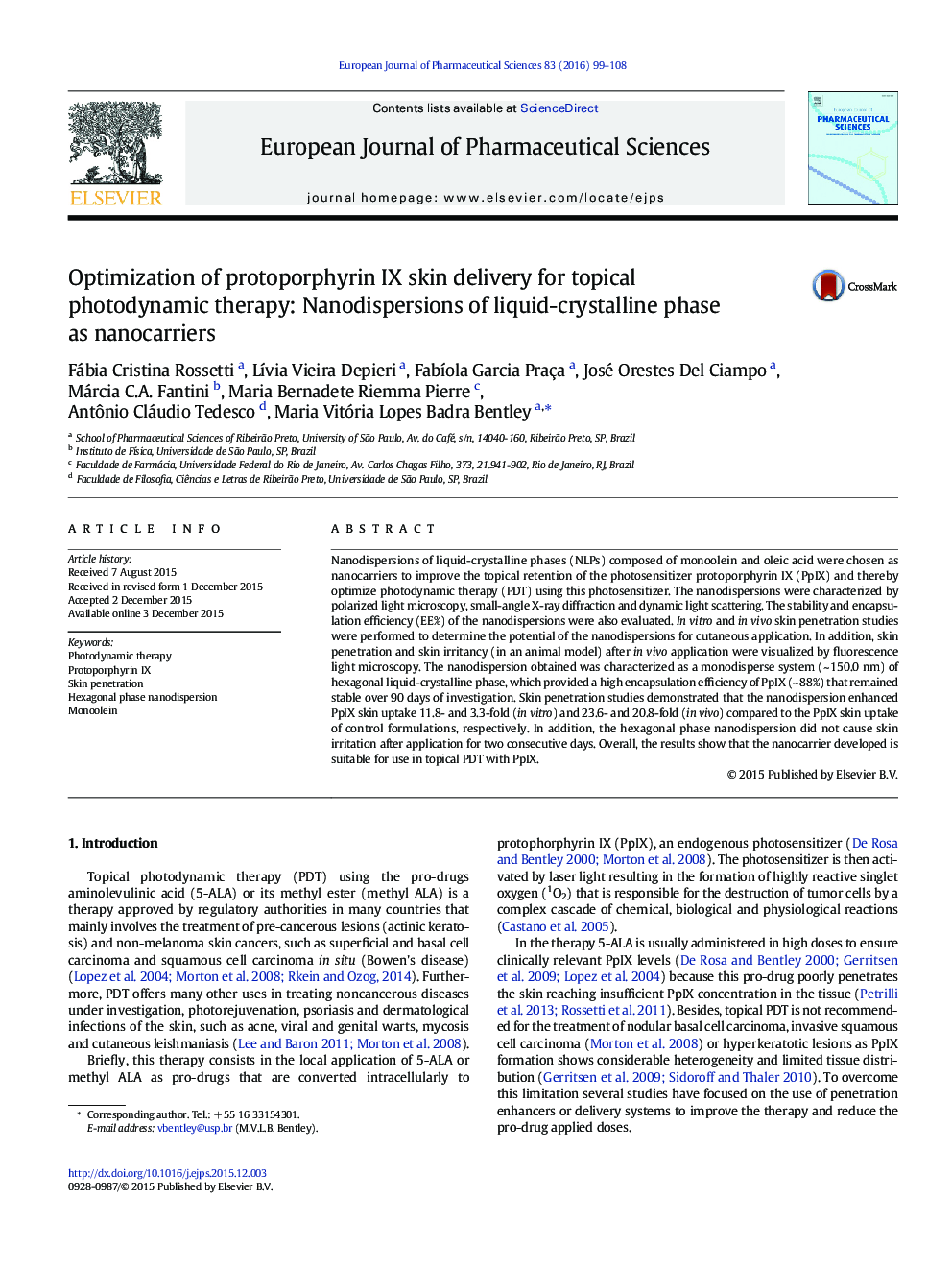| کد مقاله | کد نشریه | سال انتشار | مقاله انگلیسی | نسخه تمام متن |
|---|---|---|---|---|
| 2480153 | 1556167 | 2016 | 10 صفحه PDF | دانلود رایگان |

Nanodispersions of liquid-crystalline phases (NLPs) composed of monoolein and oleic acid were chosen as nanocarriers to improve the topical retention of the photosensitizer protoporphyrin IX (PpIX) and thereby optimize photodynamic therapy (PDT) using this photosensitizer. The nanodispersions were characterized by polarized light microscopy, small-angle X-ray diffraction and dynamic light scattering. The stability and encapsulation efficiency (EE%) of the nanodispersions were also evaluated. In vitro and in vivo skin penetration studies were performed to determine the potential of the nanodispersions for cutaneous application. In addition, skin penetration and skin irritancy (in an animal model) after in vivo application were visualized by fluorescence light microscopy. The nanodispersion obtained was characterized as a monodisperse system (~ 150.0 nm) of hexagonal liquid-crystalline phase, which provided a high encapsulation efficiency of PpIX (~ 88%) that remained stable over 90 days of investigation. Skin penetration studies demonstrated that the nanodispersion enhanced PpIX skin uptake 11.8- and 3.3-fold (in vitro) and 23.6- and 20.8-fold (in vivo) compared to the PpIX skin uptake of control formulations, respectively. In addition, the hexagonal phase nanodispersion did not cause skin irritation after application for two consecutive days. Overall, the results show that the nanocarrier developed is suitable for use in topical PDT with PpIX.
Hexagonal phase nanodispersions (HPN) are emerging as an effective drug delivery system for hydrophobic photosensitizers in photodynamic therapy (PDT). The studies carried out aimed to characterize the hydrophobic protoporphyrin IX (PpIX)-loaded HPN and investigate their skin in vitro and in vivo permeability studies (permeation and retention) compared to that of free PpIX (control solution in PEG 300) or Formulation 1. The graphic emphasizes the results obtained in this paper for in vivo skin penetration studies: higher amount of PpIX retained in the stratum corneum (SC) and epidermis plus dermis [E + D] for PpIX loaded HPN (compared to PpIX in control solution or Formulation 1) after 8 h of in vivo studies. In a typical scheme of cutaneous PDT, after application of laser light source, the conversion of the triplet singlet oxygen to singlet will cause desired tumor destruction. It can be concluded that HPN may be potential for topical application of PpIX as photosensitizer for PDT.Figure optionsDownload high-quality image (120 K)Download as PowerPoint slide
Journal: European Journal of Pharmaceutical Sciences - Volume 83, 15 February 2016, Pages 99–108